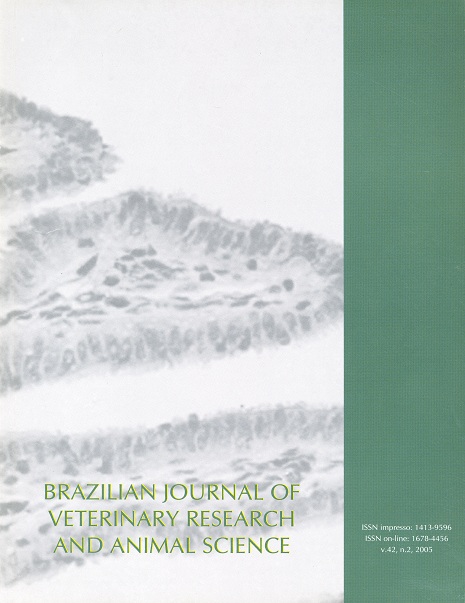Establishment of values of bone mineral density (BMD) from radius´s metaphysary and diaphysary regions in Poodle by Radiographic Optic Densitometry
DOI:
https://doi.org/10.11606/issn.1678-4456.bjvras.2005.26438Keywords:
Bone mineral density, Radiographic optic densitometry, Radiology, DogsAbstract
Radiographic Optic Densitometry was used to measure bone mineral content by radiographic images. This method contributes to the diagnosis of osteopenia, preventive estrategies associated to bone metabolism and monitoring of series of measurement of density to accompany pathologies, surgeries, therapies and. The optic density was measured by the image processing software, ImageLab; the applicability of this method was tested and canine reference values of bone mineral density (BMD) were compared to a standard aluminium scale radiographed with the bone. Correlations between the BMD values and the variables weigth, age, sex and width and thickness of the distal third of the 112 Poodles´s right radius-ulna were studied. It was observed that diaphysary BMD values were higher than metaphysary BMD values due to the differences between cancelous and compact bones. However, these differences in the BMD values were not observed in the younger group, up to about one year of age, probably due to the higher bone metabolism during the growing period in the metaphysary region. The average BMD values for each weight category showed that the best method to establish reference values was by weight and bone region. Average values of metaphysary region (M) and diaphysaries 1 (D1) and 2 (D2) were established in three different weight categories. For dogs up to 2.5kg in weight these values were BMD-M=2.55±0.30, BMD-D1=2.89±0.40 and BMD-D2=3.16±0.43mmAl; for dogs from 2.6 up to 5.0kg these values were BMD-M=3.16±0.43, BMD-D1=3.67±0.47 and BMD-D2=3.96±0.55mmAl and for dogs from 5.1 up to 7.5kg these values were BMD-M=3.72±0.50, BMD-D1=4.31±0.52 and BMD-D2=4.60±0.62mmAl.Downloads
Download data is not yet available.
Downloads
Published
2005-04-01
Issue
Section
UNDEFINIED
License
The journal content is authorized under the Creative Commons BY-NC-SA license (summary of the license: https://
How to Cite
1.
Muramoto C, Sterman F de A, Pinto ACB de CF. Establishment of values of bone mineral density (BMD) from radius´s metaphysary and diaphysary regions in Poodle by Radiographic Optic Densitometry. Braz. J. Vet. Res. Anim. Sci. [Internet]. 2005 Apr. 1 [cited 2024 Apr. 23];42(2):89-97. Available from: https://www.revistas.usp.br/bjvras/article/view/26438





